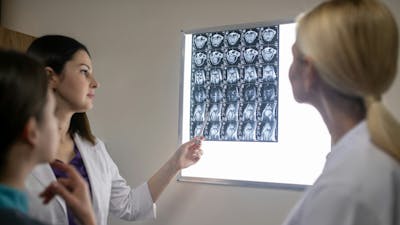New partnerships are helping to accelerate the development of shuttles to deliver drugs efficiently to their brain targets
The Wyss Brain Targeting Program is discovering and developing new brain transport shuttles that are safe and effective, along with specially engineered mice in which drugs fused to the brain shuttles can be tested. These brain shuttles and mouse models are now available for non-exclusive licensing.
Catalyzing powerful pre-competitive collaborations to discover new brain targeting technologies
The Wyss Brain Targeting Program was created as an R&D hub to promote collaboration among stakeholders in industry and academia and drive the creation of better brain therapies for patients. Our pre-competitive brain shuttle program supports discovery of brain-targeting shuttles that can benefit all participants’ drug programs while advancing the entire field. During the past three years, this project has attracted funding from eight companies and three government agencies, and has generated multiple licenses with more currently in negotiation.
With the help of these industry-academic partnerships, we have rapidly discovered brain targeting shuttles that can help revolutionize the treatment of brain diseases. We are now further engineering our lead shuttles and optimizing them to deliver tailored payloads for specific conditions.

Pre-competitive Sponsors:
- Alnylam Pharmaceuticals
- Bristol-Myers Squibb Co. (BMS)
- Eisai, Inc. (past)
- Eli Lilly and Co.
- Lundbeck A/S
- Merck (Merck, Sharpe and Dohme, LLC)
- Visterra (owned by Ostuka Pharmaceuticals)
Co-development Partners:
- Cell Signaling Technologies, Inc.
- FairJourney Biologics
- Lundbeck A/S
Grant Support:
- US Department of Defense (DoD)
- US National Institutes of Health (NIH)
- Massachusetts Life Sciences Center
Our Brain Shuttles
Our antibody-based brain transport shuttles bind to proteins on the surface of human brain microvascular endothelial cells (BMECs), are internalized into these cells, and are then transported across the blood brain barrier (BBB) into the brain. We have discovered and are developing three different panels of antibody fragment shuttles. Each panel includes antibodies of a range of affinities that bind to a distinct BMEC surface protein transport target. Brain shuttles in each of these three panels increase brain uptake of test drugs by 10- to 60-fold when tested in total brain lysate, and 10- to 30-fold in capillary-depleted brain lysate. The shuttles can deliver therapeutics antibodies, oligonucleotides, enzymes, and other therapeutics or diagnostic payloads.

Our brain transport mouse models
For each panel of shuttles against a distinct transport target, we have generated a humanized mouse line in which the extracellular domain of the mouse protein is replaced with the human extracellular domain. These extensively validated mouse lines allow shuttles that bind the human protein to be tested in mice.
If you would like to learn more about our shuttles and mouse models available for license, please get in touch with Alexander Li.
